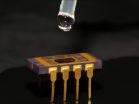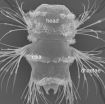(Press-News.org) Traumatic brain injuries from sports, recreational activities, falls or car accidents are the leading cause of death and disability in children and adolescents. While previously it was believed that the window for brain recovery was at most one year after injury, new research from the Center for BrainHealth at The University of Texas at Dallas published online today in the open-access journal Frontiers in Neurology shows cognitive performance can be improved to significant degrees months, and even years, after injury, given targeted brain training.
"The after-effects of concussions and more severe brain injuries can be very different and more detrimental to a developing child or adolescent brain than an adult brain," said Dr. Lori Cook, study author and director of the Center for BrainHealth's pediatric brain injury programs. "While the brain undergoes spontaneous recovery in the immediate days, weeks, and months following a brain injury, cognitive deficits may continue to evolve months to years after the initial brain insult when the brain is called upon to perform higher-order reasoning and critical thinking tasks."
Twenty adolescents, ages 12-20 who experienced a traumatic brain injury at least six months prior to participating in the research and were demonstrating gist reasoning deficits, or the inability to "get the essence" from dense information, were enrolled in the study. The participants were randomized into two different cognitive training groups – strategy-based gist reasoning training versus fact-based memory training.
Participants completed eight, 45-minute sessions over a one-month period. Researchers compared the effects of the two forms of training on the ability to abstract meaning and recall facts. Testing included pre- and post-training assessments, in which adolescents were asked to read several texts and then craft a high-level summary, drawing upon inferences to transform ideas into novel, generalized statements, and recall important facts.
After training, only the gist-reasoning group showed significant improvement in the ability to abstract meanings – a foundational cognitive skill to everyday life functionality. Additionally, the gist-reasoning-trained group showed significant generalized gains to untrained areas including executive functions of working memory (i.e., holding information in mind for use – such as performing mental addition or subtraction ) and inhibition (i.e., filtering out irrelevant information). The gist-reasoning training group also demonstrated increased memory for facts, even though this skill was not specifically targeted in training.
"These preliminary results are promising in that higher-order cognitive training that focuses on 'big picture' thinking improves cognitive performance in ways that matter to everyday life success," said Dr. Cook. "What we found was that training higher-order cognitive skills can have a positive impact on untrained key executive functions as well as lower-level, but also important, processes such as straightforward memory, which is used to remember details. While the study sample was small and a larger trial is needed, the real-life application of this training program is especially important for adolescents who are at a very challenging life-stage when they face major academic and social complexities. These cognitive challenges require reasoning, filtering, focusing, planning, self-regulation, activity management and combating 'information overload,' which is one of the chief complaints that teens with concussions express."
This research advances best practices by implicating changes to common treatment schedules for traumatic brain injury and concussion. The ability to achieve cognitive gains through a brain training treatment regimen at chronic stages of brain injury (6 months or longer) supports the need to monitor brain recovery annually and offer treatment when deficits persist or emerge later.
"Brain injuries require routine follow-up monitoring. We need to make sure that optimized brain recovery continues to support later cognitive milestones, and that is especially true in the case of adolescents," said Dr. Sandra Bond Chapman, study author, founder and chief director of the Center for BrainHealth and Dee Wyly Distinguished University Chair at The University of Texas at Dallas. "What's promising is that no matter the severity of the injury or the amount of time since injury, brain performance improved when teens were taught how to strategically process incoming information in a meaningful way, instead of just focusing on rote memorization."
INFORMATION: END
Study finds cognitive performance can be improved in teens months, years after traumatic brain injury
Eight-session gist-reasoning training advances higher-order thinking and other key frontal lobe functions in chronic recovery stages
2014-06-11
ELSE PRESS RELEASES FROM THIS DATE:
Guarding against 'Carmageddon' cyberattacks
2014-06-11
The potential value of turning the nation's freeways into "smart transportation systems" is enormous. Equipping the nation's concrete arteries with a nervous system of computers and sensors that directly control on-ramp signals to keep traffic moving smoothly can substantially reduce travel times, fuel consumption and air pollution, not to mention improve road safety. In California alone the economic penalty of traffic congestion has been estimated at $400 million in extra costs and $3.5 million in lost wages every day.
The tightly integrated computing and networking ...
Elucidating optimal biological tissue shape during growth
2014-06-11
A team of European scientists has now extended a previous biophysical model to investigate elongated growth within biological tissues by describing the evolution over time of the shape of a fruit fly's wing. They found the aspect ratio of the typical biological shapes may exhibit a maximum at finite time and then decrease. For sufficiently large tissues, the shape is expected to approach that of a disk or sphere. These findings have been reported by Carles Blanch-Mercader from the University of Barcelona, Spain, and colleagues, in a paper published in EPJ E. They provide ...
The inflatable concrete dome
2014-06-11
This news release is available in German.
Large shell structures made of concrete or stone are hardly ever built any more. The reason is that their construction requires large, expensive supporting structures. At the Vienna University of Technology, a completely new construction method has been developed, which does not require any timber structures at all: a flat concrete slab hardens on the ground, and then an air cushion below the plate is inflated, bending the concrete and quickly forming a sustainable shell. Even large event halls could be built this way. In ...
Mechanism explains complex brain wiring
2014-06-11
How neurons are created and integrate with each other is one of biology's greatest riddles. Researcher Dietmar Schmucker from VIB-KU Leuven unravels a part of the mystery in Science magazine. He describes a mechanism that explains novel aspects of how the wiring of highly branched neurons in the brain works. These new insights into how complex neural networks are formed are very important for understanding and treating neurological diseases.
Neurons, or nerve cells
It is estimated that a person has 100 billion neurons, or nerve cells. These neurons have thin, elongated, ...
HPV testing: IQWiG still sees indications of a benefit in primary screening
2014-06-11
The Institute for Quality and Efficiency in Health Care (IQWiG) assessed current study results on the benefit of a test for human papillomavirus (HPV) and examined whether its first assessment from January 2012 is still valid. The rapid report published by the Institute on 11 June 2014 answers this question with "yes". IQWiG still sees indications that precursors of cervical cancer can be detected and treated earlier and consequently tumours occur less often in women who underwent this testing.
HPV testing is not reimbursed by SHI funds
In screening for cervical cancer, ...
A somatic embryogenesis system to propagate pine hybrids able to tolerate water stress
2014-06-11
Neiker-Tecnalia, in collaboration with the UPV/EHU-University of the Basque Country, has in recent years been studying the high water stress tolerance of hybrids of the Radiata Pine (Pinus radiata X Pinus attenuata). These trees appear to be a very interesting alternative for the forestry sector in view of the modifications ecosystems are undergoing and will be undergoing as a result of climate change. To obtain new specimens of these trees in a rapid, productive way, the Basque Institute for Agricultural Research and Development, Neiker-Tecnalia, and SCION –the New Zealand ...
New paper amplifies hypothesis on human language's deep origins
2014-06-11
On the island of Java, in Indonesia, the silvery gibbon, an endangered primate, lives in the rainforests. In a behavior that's unusual for a primate, the silvery gibbon sings: It can vocalize long, complicated songs, using 14 different note types, that signal territory and send messages to potential mates and family.
Far from being a mere curiosity, the silvery gibbon may hold clues to the development of language in humans. In a newly published paper, two MIT professors assert that by re-examining contemporary human language, we can see indications of how human communication ...
A common hypertension treatment may reduce PTSD symptoms
2014-06-11
Philadelphia, PA, June 11, 2014 – There are currently only two FDA-approved medications for the treatment of posttraumatic stress disorder (PTSD) in the United States. Both of these medications are serotonin uptake inhibitors. Despite the availability of these medications, many people diagnosed with PTSD remain symptomatic, highlighting the need for new medications for PTSD treatment.
The renin-angiotensin system has long been of interest to psychiatry. Some of the first drugs targeting this system were the angiotensin converting enzyme (ACE) inhibitors and angiotensin ...
Chemical sensor on a chip
2014-06-11
This news release is available in German. They are invisible, but perfectly suited for analysing liquids and gases; infrared laser beams are absorbed differently by different molecules. This effect can for instance be used to measure the oxygen concentration in blood. At the Vienna University of Technology, this technique has now been miniaturized and implemented in the prototype for a new kind of sensor.
Specially designed quantum cascade lasers and light detectors are created by the same production process. The gap between laser and detector is only 50 micrometres. ...
Eye evolution: A snapshot in time
2014-06-11
This news release is available in German. Larvae of the marine bristle worm Platynereis dumerilii orient themselves using light. Early in their development, these larvae swim towards the light to use surface currents for their dispersal. Older larvae turn away from the light and swim to the sea floor where they develop into adult worms. Scientists of the Max Planck Institute for Developmental Biology in Tübingen have discovered that this change in the behavioural response to light is coupled to different neuronal systems underlying the eyes. The scientists have reconstructed ...
LAST 30 PRESS RELEASES:
Why nail-biting, procrastination and other self-sabotaging behaviors are rooted in survival instincts
Regional variations in mechanical properties of porcine leptomeninges
Artificial empathy in therapy and healthcare: advancements in interpersonal interaction technologies
Why some brains switch gears more efficiently than others
UVA’s Jundong Li wins ICDM’S 2025 Tao Li Award for data mining, machine learning
UVA’s low-power, high-performance computer power player Mircea Stan earns National Academy of Inventors fellowship
Not playing by the rules: USU researcher explores filamentous algae dynamics in rivers
Do our body clocks influence our risk of dementia?
Anthropologists offer new evidence of bipedalism in long-debated fossil discovery
Safer receipt paper from wood
Dosage-sensitive genes suggest no whole-genome duplications in ancestral angiosperm
First ancient human herpesvirus genomes document their deep history with humans
Why Some Bacteria Survive Antibiotics and How to Stop Them - New study reveals that bacteria can survive antibiotic treatment through two fundamentally different “shutdown modes”
UCLA study links scar healing to dangerous placenta condition
CHANGE-seq-BE finds off-target changes in the genome from base editors
The Journal of Nuclear Medicine Ahead-of-Print Tip Sheet: January 2, 2026
Delayed or absent first dose of measles, mumps, and rubella vaccination
Trends in US preterm birth rates by household income and race and ethnicity
Study identifies potential biomarker linked to progression and brain inflammation in multiple sclerosis
Many mothers in Norway do not show up for postnatal check-ups
Researchers want to find out why quick clay is so unstable
Superradiant spins show teamwork at the quantum scale
Cleveland Clinic Research links tumor bacteria to immunotherapy resistance in head and neck cancer
First Editorial of 2026: Resisting AI slop
Joint ground- and space-based observations reveal Saturn-mass rogue planet
Inheritable genetic variant offers protection against blood cancer risk and progression
Pigs settled Pacific islands alongside early human voyagers
A Coral reef’s daily pulse reshapes microbes in surrounding waters
EAST Tokamak experiments exceed plasma density limit, offering new approach to fusion ignition
Groundbreaking discovery reveals Africa’s oldest cremation pyre and complex ritual practices
[Press-News.org] Study finds cognitive performance can be improved in teens months, years after traumatic brain injuryEight-session gist-reasoning training advances higher-order thinking and other key frontal lobe functions in chronic recovery stages


